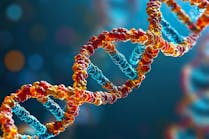New details on how immune cells ‘see’ and respond to mutations in cancer cells may lead to more targeted and effective immunotherapy
For the first time, a research team has identified and analyzed the steps by which immune cells “see” and respond to cancer cells, providing insights into reasons some treatments may be effective for certain patients but not others.
The UCLA Jonsson Comprehensive Cancer Center scientists leading the research believe their findings will lead to better, more personalized immunotherapies – even for patients whose immune systems currently do not appear to respond to treatment.
The researchers adapted advanced gene-editing technology to make unprecedented observations about immune responses in patients with metastatic melanoma receiving anti-PD-1 “checkpoint inhibitor” immunotherapy. Although immune cells called T cells have the ability to detect mutations in cancer cells and eliminate them, leaving normal cells unharmed, cancer cells often evade the immune system. Checkpoint inhibitors are designed to improve the T cells’ ability to recognize and attack cancer cells.
The investigators showed that when immunotherapy is effective, it directs a diverse repertoire of T cells against a small group of selected mutations in a tumor. These T-cell responses expand and evolve during the course of treatment, both within the tumor and in the bloodstream. Patients for whom the therapy fails also present a T-cell response against a similarly reduced number of mutations in the tumor, but those immune responses are less diverse, and they do not expand during treatment.
In the 11 patients studied, seven had a response to PD-1 blockade; four did not. The number of mutations in the tumors ranged between 3,507 and 31. Despite this wide range, the number of mutations seen by tumor-reactive T cells ranged between 13 and one. In patients with clinical benefit from the therapy, the responses were diverse, with a range between 61 and seven different mutation-specific T cells isolated in the blood and the tumor. In contrast, in the patients lacking a response to therapy, the researchers only identified between 14 and two different T cells.
Also, in patients responding to treatment, the researchers were able to isolate tumor-reactive T cells in blood and tumors throughout treatment, but in patients without a response, the T cells were not recurrently detected. Still, the study showed that immune receptors from the T cells isolated from all patients – regardless of response or not – redirected the specificity of immune cells against the tumor, producing antitumor activity.





